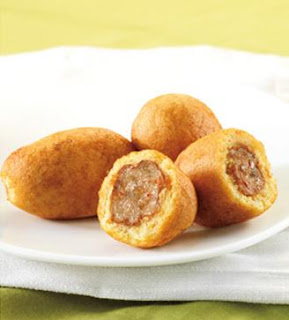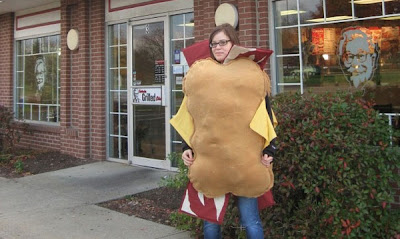Okay, folks. We better get down to the meat of this holiday before everyone runs out to purchase (or hunt) their turkey or turkey alternative. Let me start by reminding you guys that turkeys themselves are a fairly new addition to the Thanksgiving holiday. The birds on the first Thanksgiving tables were pheasants and ducks, a far cry from the
six-eight legged super NFL turkey.
Heritage Turkeys: For Food Activists and Slow Food Friends
These gobblers are the ancestors of the common Broad-breasted White industrial breed of turkey you will find in most grocery bins and their breeds (including the Standard Bronze, Bourbon Red, Narragansett, Jersey Buff, Slate, Black Spanish, White Holland, Royal Palm, White Midget and Beltsville Small White) have been preserved alongside their quality of life. Raising heritage breeds is more costly and time consuming for the farmer but better for biodiversity, the turkey and the consumer. Supermarket turkeys grow to an average of 32 pounds over 18 weeks. Often times they can't even walk and their narrow genetic base leaves them highly susceptible to disease. Heritage birds, on the other hand, take 24-30 weeks to reach their market weight and live their lives with far more dignity. Read more about
Heritage turkeys here. And
click here to browse the Maryland Department of Agriculture's Turkey Farm listings.
Pheasant and Small Game Fowl: For the Hunters
Those of you who stay basic and dine on self-caught meat like the Pilgrims get the award for being the most sustainable. John Manikowski, the creator of the Wild Fish & Game Cookbook, wrote
a wonderful essay for the Global Gourmet back in 1996 that is a great how-to as well as why-to for those of you plan to dine on pheasant or another kind of small game fowl.
Tofurky: For the Vegetarians
Having spent quite a few Thanksgiving holidays as a vegetarian, I think it is safe to say that even a conventional store-bought feast offers more than enough for a great "side item sampler." But of course I realize that our vegetarian
hosts out there may want to have that main dish in the center of the table so in comes the notorious Tofurky. Kudos for the fact that no animals were harmed in the making of your meat-substitute, but please remember that the Tofurky, like the common Broad-breasted white turkey found on the shelf nearby, is probably not the most sustainable choice.
Turducken: For Heaven's Sake, How Are You On This Blog?!
Visited
Wikipedia for this one. Their definition is as follows: "A turducken is a dish consisting of a de-boned chicken stuffed into a de-boned duck, which itself is stuffed into a de-boned turkey. The word turducken is a portmanteau of turkey, duck, and chicken or hen. The thoracic cavity of the chicken/game hen and the rest of the gaps are stuffed, sometimes with a highly seasoned breadcrumb mixture or sausage meat, although some versions have a different stuffing for each bird. The result is a fairly solid layered poultry dish, suitable for cooking by braising, roasting, grilling, or barbecuing."
Our definition: A gluttonous dish consisting of several factory-farmed meats shoved into one another (likely by machine) that may have some historical and traditional relevance to the very wealthiest of 18th century diners but now caters mainly to the growing obesity epidemic in America (not to mention heart disease and many other health problems associated with a western diet).



























